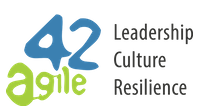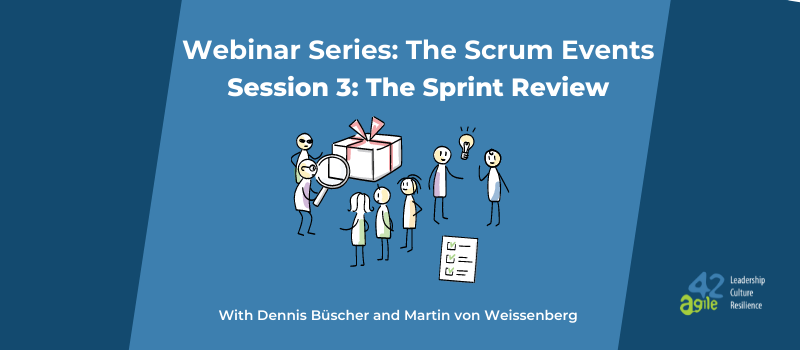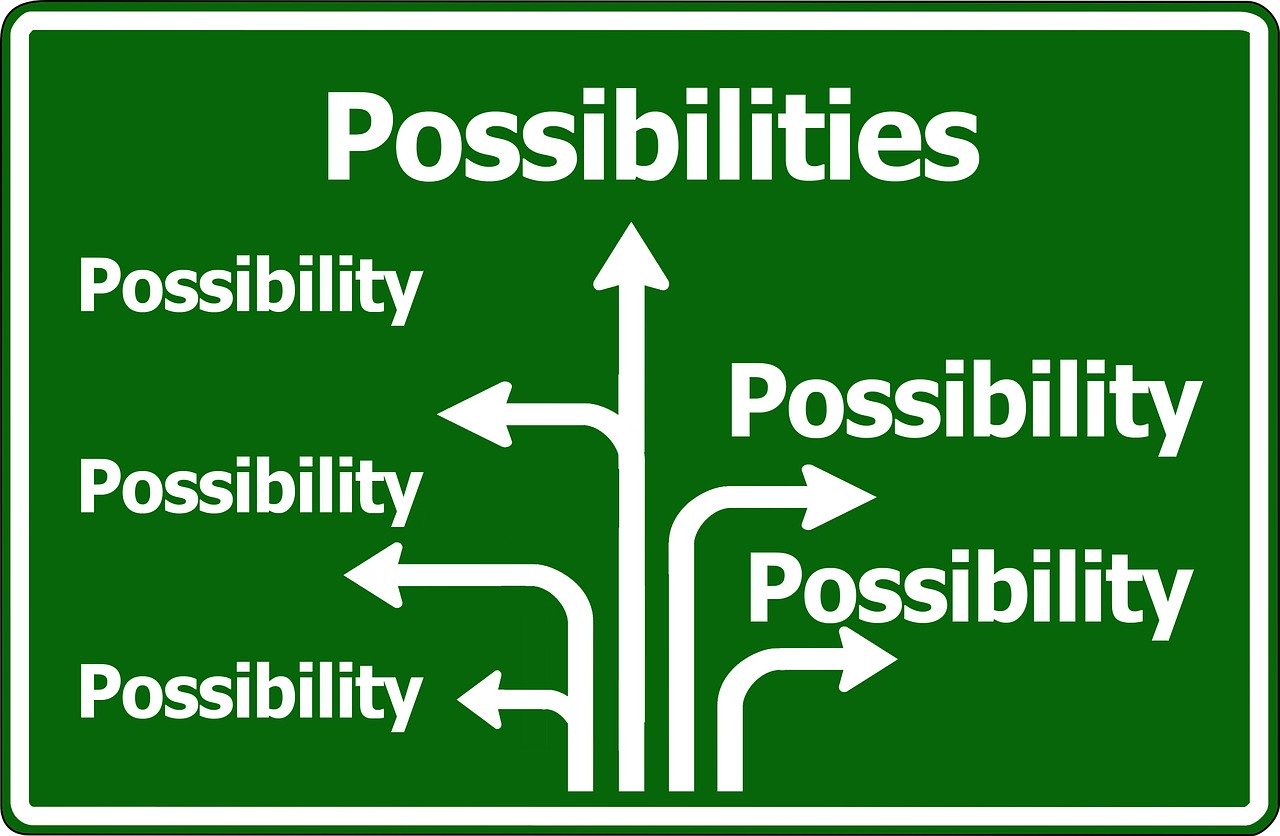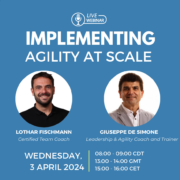Webinar | How to Assess Agile Teams
In this webinar, our coaches Gregory Keegan and Alessa Leuschen go beyond traditional performance assessment methods and dive into how we can more effectively evaluate and measure teams in an Agile environment. They explore the key challenges and complexities to assessing Agile teams, give practical approaches on how to better assess Agile teams, and how we can leverage those results to foster a culture of continuous improvement and growth.
Watch | How to Assess Agile Teams Webinar
To get notified about future webinars and special offers, subscribe to our newsletter.
Seven Key Takeaways from the Webinar
A Traditional Approach to Team Assessment Doesn’t Always Work
A traditional approach to measuring performance is often imposed upon teams and does not require the team’s input, feedback, or involvement. This can cause individuals and teams to disengage from the process and it doesn’t promote meaningful actions. Growth and improvement come from within teams, which is why we should involve them and understand what they want to achieve.
“We should ask: does the team want to assess itself?” advises Leuschen, instead of forcing an assessment on them. This frame of mind will help the team to be proactive in assessing themselves and improving their performance. This approach aligns more with Agile’s principles of empowerment, collaboration, and ownership.
Cultivating an Agile Mindset is Crucial
Often, leaders and managers that want to improve their team’s agility focus on how well they implement Agile frameworks or methods. There are some problems with this approach, especially in Agile environments where contexts, practices, and teams can vary. “Are you doing Agile or are you being Agile?” asks Keegan. We can only start to drive improvement in teams once we understand the difference
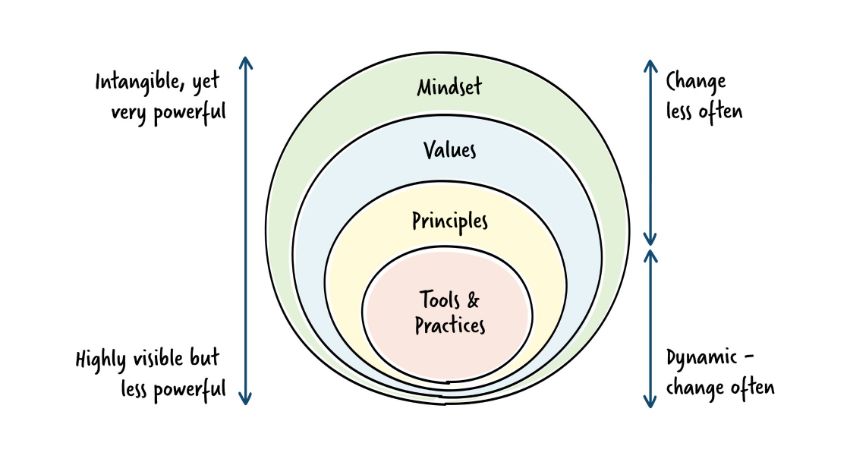
The diagram above illustrates what we should focus on within an Agile mindset, which incorporates Agile values and principles. An Agile mindset is intangible yet incredibly powerful as it doesn’t change often and sets the tone for how teams behave. Tools and practices are highly visible, but they are dynamic and therefore subject to change. “How a team lives Agile values and principles is a more accurate indication of a team’s agility,” says Keegan, and it is what we should focus on when assessing teams.
It can be challenging to Assess Agile Teams
We should assess teams to show progress and identify areas for improvement. However, when it comes to assessing Agile teams, it can be hard to measure for various reasons
Subjectivity
It can be hard to objectively measure Agility as it encompasses a mindset, values, principles, and behaviors. So, an effective team assessment needs to strike a balance between objective criteria and subjective observations to accurately gauge team agility.
Limited Visibility
When assessing Agile teams, we often have limited visibility as we do not know the inner workings of a team. Agile teams are autonomous and self-organizing, which can hide their decision-making processes and interactions.
Standardized Metrics
Using standardized metrics can be inaccurate as they fail to capture the nuances of teams and their specific contexts. An assessment needs to meet the team’s unique needs and understand their preferred framework or methodology.
Team Dynamics and Collaboration
We shouldn’t only assess individual performance but also team dynamics and collaboration. For this reason, we need to develop a deep understanding of a team’s interactions, level of trust, and overall synergy.
Team assessments can often be oversimplified or worse, they can prove to be of little value to teams. This is summarized in Eli Goldratt’s quote: “Tell me how you measure me, and I will tell you how I behave.” For example, if you focus on the number of tasks completed, you are encouraging teams to generate output or pull items from the backlog instead of focusing on outcomes or customer satisfaction. Here, Leuschen reminds us that a culture of trust and transparency is essential to mitigate these effects and make sure we are measuring what matters.

Use a Range of Assessment Techniques
To understand how an Agile team has progressed and how they can improve, we need to use both quantitative and qualitative assessments.
Quantitative techniques rely on measurable data such as velocity, burn-down charts, defect density, and customer satisfaction ratings like the net promoter score. These metrics are useful in that they can help us to see trends, patterns, and can help us to track progress over time.
Qualitative data includes subjective insights, gathered via methods such asinterviews and surveys, and observations. These can help us understand the team’s mindset, collaboration styles, team dynamics, context, and adherence to Agile values and principles. We use these metrics to identify areas of improvement and capture existing nuances within teams.
Recommended Reading: How to Use Agile Metrics for Team Improvement
A Practical Approach to Team Assessment
As part of our approach to team assessment, we use a self-assessment tool for teams at agile42. The tool employs the 12 Agile principles to guide teams towards continuous improvement. Teams assess themselves according to each principle, and we gather this data using various tools, like a rating system.
Once the data has been collected, it is shared with the team, and they discuss the results. Then, leaders and coaches engage in a conversation with the team. Keegan suggests asking powerful questions such as, “What areas would they like to improve upon?” and “Did any of these results surprise them?” From this point, we can introduce coaching skills and techniques to drive change.
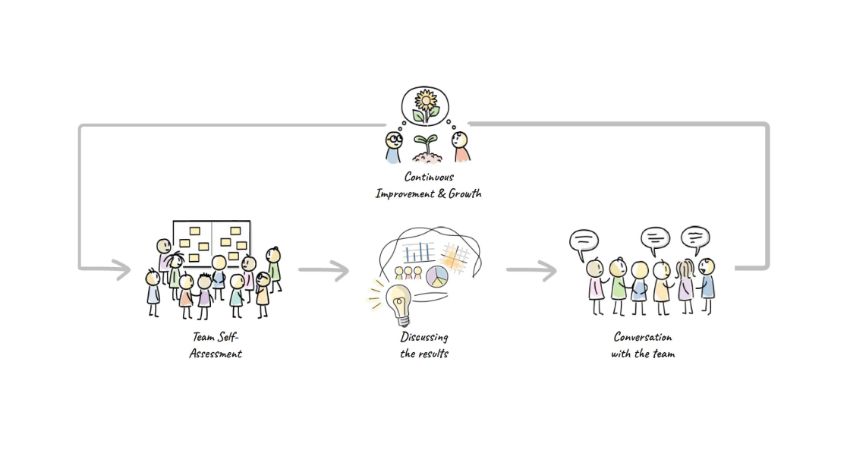
Use Coaching Tools
Coaching tools include methods, techniques, and tools that you can introduce to try and adjust the behavior in the team.. Here, it is important to avoid biases. “You want to validate that hypothesis as early as possible,” says Keegan. Once our hypothesis has been validated, we can define a goal state that is specific to a principle. Indicators can then measure progress toward a goal. Here we can define leading and lagging indicators, to help us stay on track and reach our goals.
We have put together coaching techniques and tools in our booklet: “A practical guide to agile team coaching.” It covers the 12 principles alongside 42 tools to improve your team’s practices and how they live the Agile principles.
If you want the ebook sent to your inbox once it is publicly available, join our waiting list.
Focus on Continuous Improvement
Once the assessment cycle mentioned above has been completed, we repeat it. This allows us to see how teams are improving and helps them to focus on continuous improvement. Sometimes, coaches and Scrum Master observe that the team’s performance dips after the second round of the assessment. This is known as the Dunning–Kruger effect, where teams become more self aware and critical of themselves. Once teams have a greater understanding and awareness of themselves, they will be able to more accurately assess themselves and their performance will pick up again after the initial first round. What makes this approach special is that it is an iterative assessment that captures the dynamic nature of agility, and allows teams to adapt, improve, and be flexible.
